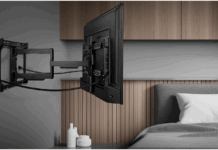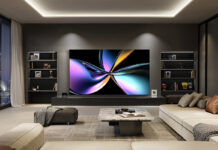
For many years a receiver was proudly positioned as the beating heart of any serious home theatre or audio system. As the central focus for both inputs (sources such as disc players, game consoles, TV reception boxes, etc.), and outputs (speakers, multi-room signals, Bluetooth transmision, etc.), a receiver is built to serve as the central point at which all elements of your system communicate with one another.
Competing solutions have dramatically shifted their adoption in favour of all-in-one solutions, dropping the flexibility and potential levels of performance in favour of convenience. And receivers are often perceived to be a complicated setup strangled with a nest of connected wires and complex features most will never use. So are they really worth the investment for your home theatre?
What is a receiver?
A receiver, at its heart, serves two functions—to act as a switch between multiple inputs, and to send the selected signal to the speakers that are connected at the back. For most, they see it as that box with the volume knob, but on a fundamental basis a receiver truly is the centerpiece from which all other signals either get routed or transmitted, whether you’re selecting a Blu-ray to watch, a game to play, or music to listen to.
Do I really need to buy a receiver?
For many a receiver may be overkill, as in certain more modest setups there are more turnkey options that will suit the task. While for years just about any setup required a receiver-like box to do any of the heavy lifting, manufacturers have really pushed for greater simplicity and building into devices functionality that previously required a full-on separate unit. Many people may find that a good sound bar provides the quality and quantity of sound suited to their needs. Sound bar quality has dramatically increased over the last several years, with some top-end models mimicking multi-speaker layouts, even decoding Atmos signals to further replicate the theatrical experience. Meanwhile, Bluetooth speakers have all the convenience of portability without the need for wires, and their current popularity for playback of music anywhere inside and outside the home is undisputed.
In contrast, receivers do still require additional investment in cables, speakers and space in your home in order to get the most out of them.
Why, then, should I consider investing in a receiver?
While it’s true that putting a receiver at the heart of setup is certainly less straight forward than an all-in-one solution, the rewards of assembling a home theatre audio system complete with a powerful and versatile receiver can be substantial. This is really the only true solution for those serious about getting the most out of their systems, and from vinyl advocates to home theatre fanatics, a receiver remains one of the main options, with its benefits outweighing the conveniences of competing solutions.
Having a receiver provides far more flexibility and customization, encouraging you to select speakers of your choice that can be placed physically in the ideal location for optimal playback. Further, purchasing a receiver allows your setup to grow with increasing numbers of components over time, crafting the sound to your unique environment and providing enormous opportunity to find the correct synergy between all of your home theatre devices.
In fact, there are still many strong arguments for selecting a receiver if you’re wanting to get the most out of your music, streaming and disc-based media. Thankfully, with exceptional models from the likes of Sony, Denon, and Onkyo, these receivers have never been more powerful, and never been more easy to setup, configure, and unleash the full potential of your listening experience.
How do I choose which receiver is right for me?
Receivers are differentiated by the type and number of inputs they have, the number of sound channels that can be output, and the video signals that they can help route. Your choice depends on how you are going to be incorporating the device, either as the central component of a home theatre or as part of a robust music setup, and how much you’re willing to invest in terms of the number of speakers.
The stereo setup
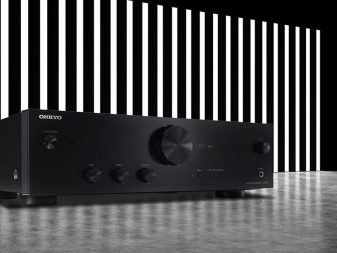
Many music fans would be thrilled with a simple, capable unit dedicated to providing the cleanest reproduction of 2-channel audio. Paired with a good set of speakers that can be spaced a few feet apart to achieve the ideal soundstage, these receivers are superior to any portable solution.
CD players or even tape decks continue to be used by music fans, while all modern models include Bluetooth functionality allowing you to stream directly from your mobile device. With the addition of a 6.35mm headphone output jack for use with premium headphones, along with robust speaker terminals, a 2-channel receiver provides an ideal solution for any audiophile.
Surround sound
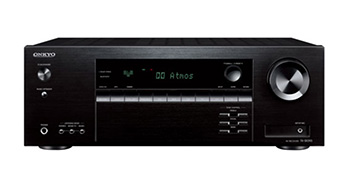
Even a relatively modest receiver like the one shown to the right includes specifications that enthusiasts only dreamed of a few years ago. Many surround sound receivers include 4 or more HDMI inputs, 4K passthrough and the processing of Dolby Digital True-HD and DTS HD signals, and can easily drive a true 5.1 setup with aplomb. Modern examples add in Bluetooth connectivity, along with post-processing that can take a stereo signal and have it spread across your soundfield and you’ve got yourself a prime device for any kind of playback capable of making everything from your video games to your favourite tunes come to life. Some of the most affordable receivers even include spatial audio setups like ATMOS, making the decision to dive into the world of receivers even more accessible.
The ultimate setup
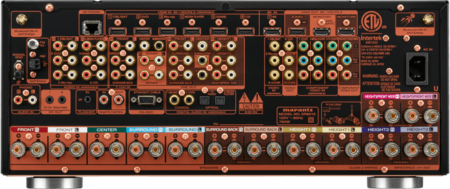
At the top of the peak are mega-receivers that feel more like supercomputers than home theatre components. These monsters with capabilities that even a few years ago would have been only available at the multiplex incorporate all the latest video surround modes and enough power to drive an entire room full of speakers or the biggest screens available. With a dizzying array of inputs and capabilities this Marantz SR8015 unit shown is like a supercomputer for your home theatre, allowing you to plug in an army different HDMI devices with full 8K/4K/HDR/Variable refresh rate capabilities.
For older devices you can plug in a half dozen other sources with the smattering of RCA inputs, and even amplify signals from your record player, all into one monolithic chasis. Some are able to drive 13 (or more!) speakers as well as multiple subwoofers, providing one box to rule them all! Higher end models include superior room correction such as Audyssey MultiEQ XT32 or DIRAC, where via an included microphone and easy-to-follow on-screen prompts you can dial in your setup and tune the audio specifically to your room. If audio (and video!) perfection is your dream, having a model such as this in your setup will surely make those wishes come true.
Receivers provide the best audio for any home
A receiver is certainly not for everyone, and it’s a far more robust setup than many will require. Yet for those wanting the most out of their content, and are willing to invest the time, effort and expense, the rewards are great. Modern receivers, with their myriad features, are truly exceptional and with capabilities that rival any multiplex or concert hall. Paired with an investment in quality cables and speakers that can last for a lifetime of listening, a receiver can continue to serve as the heart of your setup far better than any other competing solution.
Discover more specialized home audio and theatre options at bestbuy.ca today.

